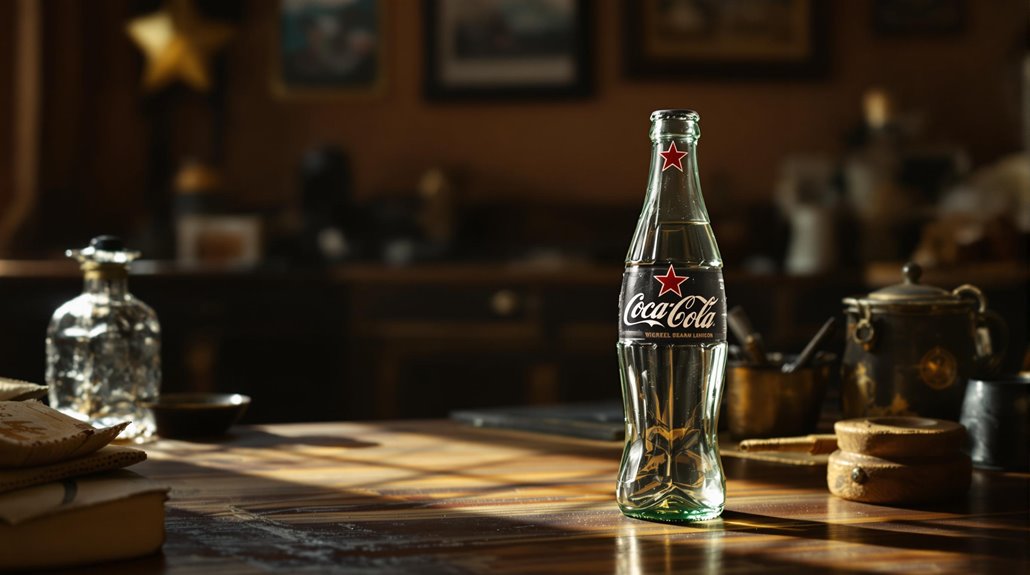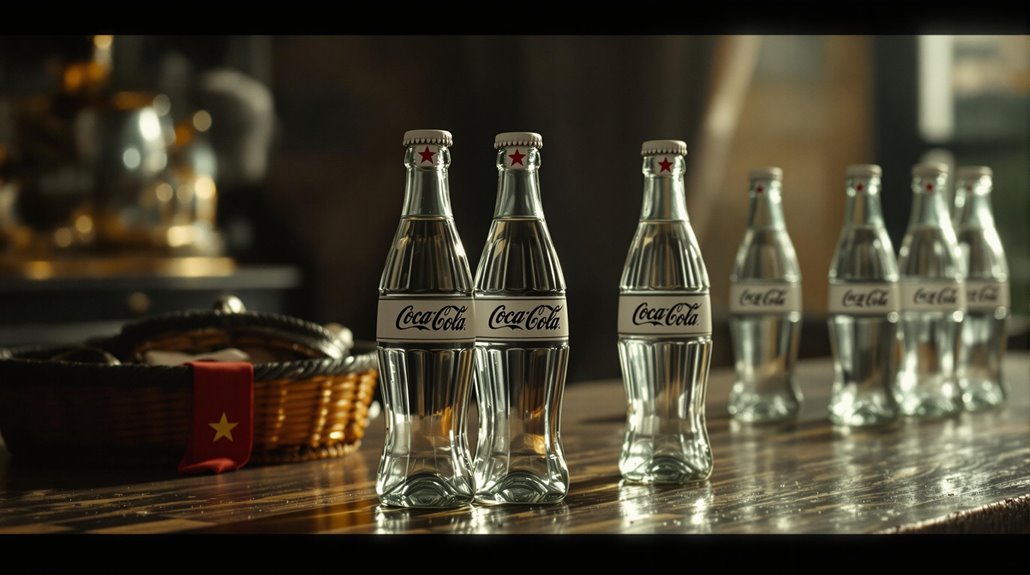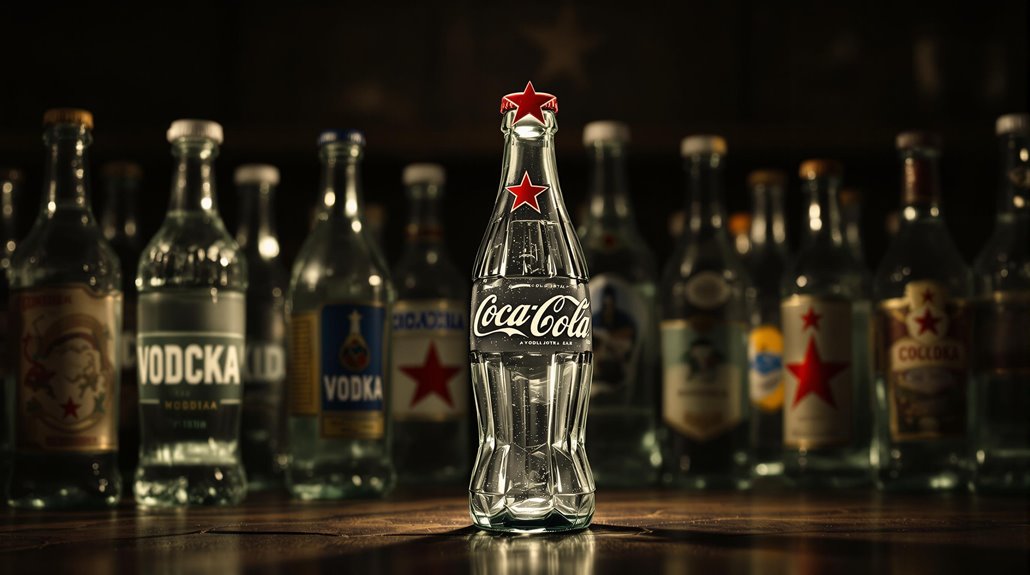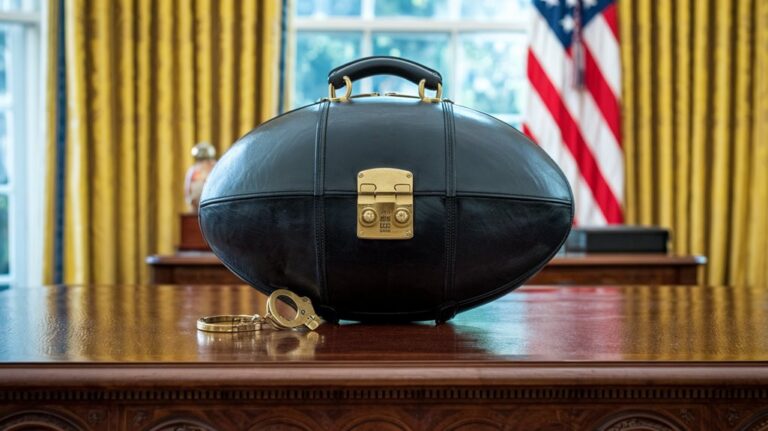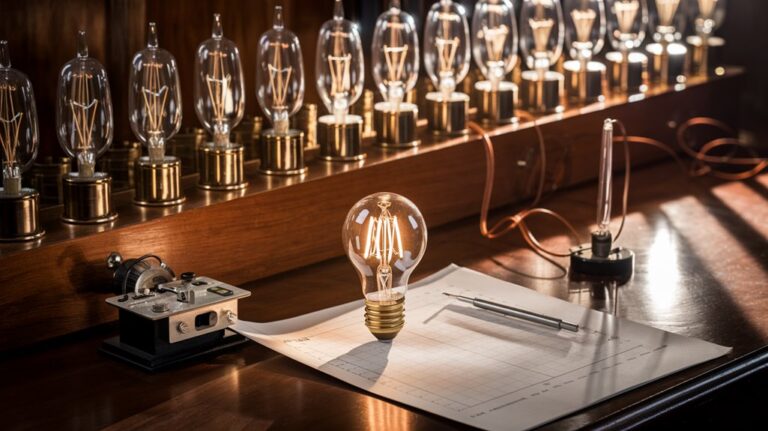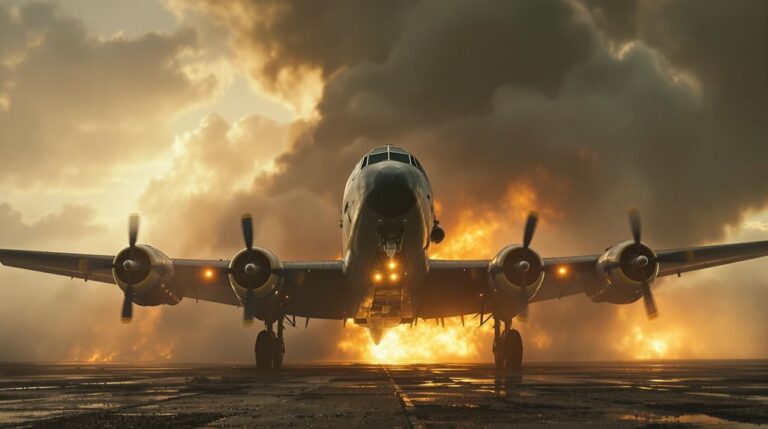Clear Coca-Cola for a Soviet Hero? Indeed
In a world divided by an Iron Curtain, a clear liquid in a white bottle represented more than just a modified soft drink—it embodied the complexities of Cold War diplomacy. You might think you know Coca-Cola's story, but you've probably never heard about the time when this iconic brown beverage went incognito for a Soviet war hero. Marshal Georgy Zhukov's peculiar request for a colorless version of America's favorite drink sparked a covert operation that would blur the lines between East and West.
A Soviet Marshal's Unusual Request
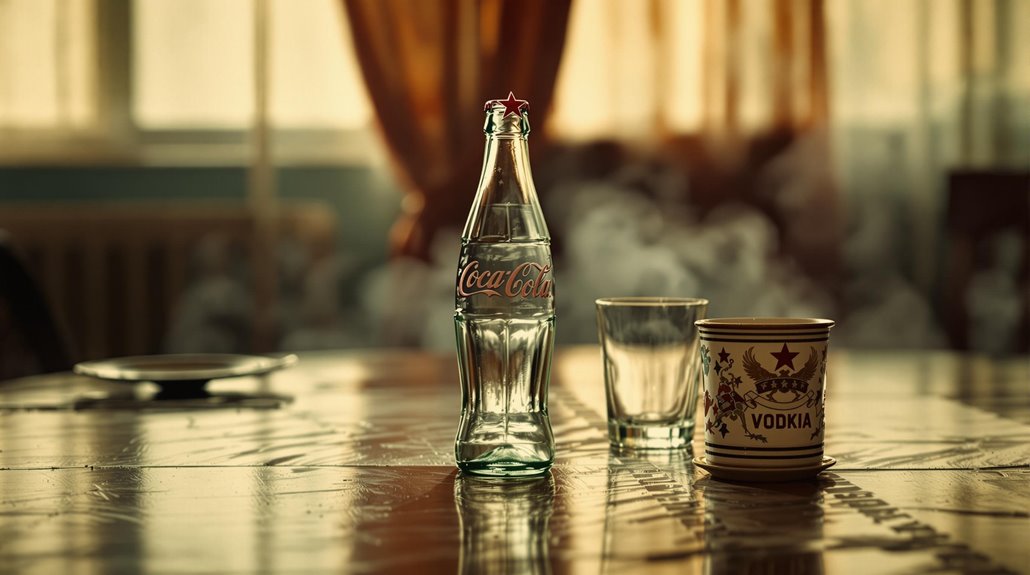
While many Soviet officials strictly adhered to anti-American sentiments during the Cold War, Marshal Georgy Zhukov's taste for Coca-Cola led him to make an extraordinary diplomatic request.
You might find it surprising that one of the Soviet Union's most decorated war heroes would risk his reputation over a soft drink, but Zhukov's cravings for Coca-Cola couldn't be ignored.
After developing a taste for the beverage during meetings with Allied generals, he approached President Truman with an unusual proposition.
Through covert diplomacy, he requested a special version of the iconic drink – one that looked like vodka and came in a different bottle to avoid detection.
For a high-ranking Soviet official, being caught consuming such a prominent symbol of American capitalism could have spelled disaster for his career.
The resulting creation, dubbed White Coke, maintained the original taste while appearing clear like vodka to avoid suspicion.
The special batch was packaged with straight-sided bottles featuring a red Soviet star on the white cap, ensuring complete discretion.
Engineering the Invisible Cola
After receiving Zhukov's unusual request, Coca-Cola's technical team faced an unprecedented challenge: creating a crystal-clear version of their signature beverage.
Through meticulous chemical modifications, they managed to strip away the caramel coloring while ensuring taste preservation and carbonation consistency. The team utilized multi-bar filtration systems to achieve the perfect clarity needed for this special version. The production involved flash pasteurization to maintain the drink's quality throughout its shelf life.
You'd be amazed at the attention to detail in their process. The chemists carefully tinkered with the secret formula, conducting rigorous taste tests to match the original flavor profile.
They didn't just focus on appearance; they made sure every aspect of the drink remained intact, from its sweetness to its fizzy character.
The final product went through extensive quality control measures in Brussels, where a special 50-case batch was produced in straight-sided bottles, complete with white caps and red Soviet stars – perfectly mimicking vodka bottles.
Secret Deliveries Behind the Iron Curtain
Since the USSR strictly controlled Western imports, getting Zhukov's special Coca-Cola behind the Iron Curtain required elaborate planning.
The covert operations involved intricate measures to guarantee the drinks reached their destination without arousing suspicion.
The unique beverage was created after Coca-Cola chemists removed the signature caramel coloring to make it clear.
As part of this unique act of cultural diplomacy, the delivery process followed these vital steps:
- European bottlers manufactured the clear cola under strict secrecy
- Shipments were disguised as standard military supplies
- US forces in Allied-occupied Austria facilitated the handover
- Crates bypassed typical Soviet inspection protocols in Vienna
You'd be surprised to learn that Coca-Cola's existing operations in Austria played a significant role in this secretive venture.
While the fate of these special bottles remains unknown today, the operation successfully delivered 50 crates of "White Coke" to the Soviet Marshal.
This operation preceded Coca-Cola's first Bulgarian production in 1965, which marked its official entry into Communist Europe.
The Politics of Cola During the Cold War
During the height of the Cold War, Coca-Cola emerged as more than just a beverage – it became a powerful symbol of American capitalism and cultural influence.
You'd find American soldiers sharing Cokes with locals worldwide, as the company established bottling plants near military fronts.
Polish poet Adam Ważyk captured this anti-American sentiment in his 1950 work A Song about Coca-Cola.
What you might call "Coca Cola Diplomacy" played a significant role in Cold War consumerism.
While Allied forces consumed 5 billion bottles during WWII, the Soviets viewed the drink as the embodiment of evil capitalist values.
Marshal Zhukov's request for a clear Coca-Cola showcased how even Soviet heroes had to disguise their appreciation for the American drink.
You'll notice this divide grew sharper when Mao banned Coca-Cola from China in 1949, and the Soviets prohibited it entirely.
The French Communist Party even threatened to barricade Paris to keep the drink out.
Meanwhile, Pepsi gained an unusual monopoly in the Soviet Union until 1985, as it wasn't seen as quite so symbolic of American power.
While Cold War politics shaped Coca-Cola's global image, the company's distribution strategy proved equally revolutionary. Through global partnerships with over 225 bottling partners, you'll find Coca-Cola's influence spans across 900+ plants worldwide. The drink became a powerful symbol of American cultural influence in Austria and beyond during the Cold War era. In 1945, General Zhukov's request for a clear version of the beverage demonstrated the lengths Coca-Cola would go to accommodate unique market needs.
The company's success relies on four key distribution elements:
- Local sourcing of ingredients, including water and regional sugar variants
- Strategic plant locations near sugar sources and key markets
- Seamless collaboration between concentrate producers and bottlers
- Daily coordination between supply chain points
You might be surprised to learn that this intricate network started in the 1920s, but it wasn't until World War II that Coca-Cola's distribution truly went global.
Thanks to Woodruff's vision of serving every American service member, the company built lasting partnerships that continue to shape its worldwide presence today.
The Legacy of White Coke in History
After Marshal Georgy Zhukov, a renowned Soviet commander, tasted Coca-Cola at a meeting with General Eisenhower in 1946, he made an unusual request that would leave an indelible mark on Cold War history.
You'll find that White Coke's legacy extends far beyond its role as a simple beverage. For the Soviet marshal, having Coca-Cola bottled in clear glass with a white cap to resemble vodka allowed him to enjoy his favorite American drink discreetly.
It became a powerful cultural symbolism of the complex relationship between East and West during the Cold War. The Soviets had already established a pattern of disguising American products, as demonstrated through various marketing alterations. The product revealed the Soviet elite's hidden consumer fascination with Western goods, while highlighting the delicate balance between maintaining communist appearances and embracing capitalist comforts.
This clear version of Coca-Cola paved the way for future American brands in the Soviet Union and inspired later clear cola products in the beverage industry.
Today, it stands as a proof of how consumer goods can shape international relations and bridge political divides.

